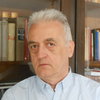Hello Visitor! Log In
On the Necessary Unity of National, Regional and Global Approaches to Science & Technology
ARTICLE | June 25, 2021 | BY Nebojša Nešković
Author(s)
Nebojša Nešković
In 1954, the European Organization for Nuclear Research (CERN), Geneva, Switzerland, was founded. Today, it is the largest laboratory for particle physics in the world. A similar institution, the Joint Institute for Nuclear Research (JINR), was founded in 1956 in Dubna, USSR. Currently, it is one of the largest research centers in the world devoted to particle physics, nuclear physics, condensed matter physics, and radiation biology. The two organizations have been very successfully demonstrating advancement and excellence in science and technology on the global level for more than 60 years.
"In November 2016, the World Academy of Art and Science (WAAS) launched the initiative to create a large research infrastructure project that would focus on sustainable development of Southeastern Europe.”
The CERN model was used in founding the TESLA Scientific Center (TSC) within the Vinča Institute of Nuclear Sciences (VINS), in Belgrade, Yugoslavia, in 1996 as well as the center under the name Synchrotron Light for Experimental Science and Applications in the Middle East (SESAME), in Allan, Jordan, in 2003. The former center, having the TESLA Accelerator Installation as its core, created to act in Southeastern and Central Europe was devoted to science, technology and medicine with ion beams. Its foundation was directly supported by CERN, JINR, the Oak Ridge National Laboratory (ORNL), Tennessee, USA, and the Government of Serbia. The latter center was established to act in materials science in a wide sense with a synchrotron light source. Unfortunately, TSC terminated its activities in 2006, due to refusal of the international community to support it. On the other hand, the use of SESAME began in 2017, as a result of serious support by the same community.
In November 2016, the World Academy of Art and Science (WAAS) launched the initiative to create a large research infrastructure project that would focus on sustainable development of Southeastern Europe. The funding of the project was planned to be carried out through the Berlin Initiative, established by the European Union. The initial idea was to devote the project to the completion of construction and use of TESLA. In December 2016, the project was supported by CERN. As a result, in the succeeding several months, a fruitful exchange of ideas on the project started between VINS, the Ruđer Bošković Institute in Zagreb, Croatia, and the Jožef Stefan Institute in Ljubljana, Slovenia. However, soon after that, a well-known geopolitical decision that Serbia could not play any serious role in the region was confirmed. Thus, the WAAS idea to use TESLA for scientific and technological cooperation in Southeastern Europe, which would definitely provide very much needed cultural bridges between the nations in the region, some of them being in severe conflict since 1990s, was abandoned.
In spite of that, in March 2020, the Vinča Institute launched the New TESLA Project: Research, Development and Education for the Fourth Industrial Revolution, focused on the completion of construction of TESLA. The Project should be realized by the Government of Serbia in cooperation with the Central European Research Infrastructure Consortium (CERIC); JINR; the Brookhaven National Laboratory (BNL), Upton, New York, USA; and the Institute of Modern Physics, Lanzhou, China.


